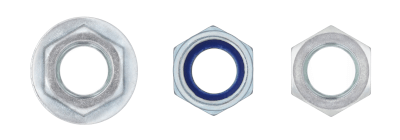What Is Carbon Steel?

Carbon steel is a steel variant where carbon is the primary alloying element added to iron. Besides carbon, it may also contain elements such as manganese, silicon, phosphorus, and sulfur. The carbon content significantly influences the steel’s properties, thus earning the name carbon steel.
While pure iron with negligible carbon content (less than 0.02%) is too soft for practical use, adding carbon enhances its hardness and strength. Carbon steel utilizes this property, offering varied carbon content levels to produce steel with desired characteristics.
Uses of Carbon Steel
Carbon steel is employed in numerous structures, machine components, and everyday items. Its mechanical properties depend on the carbon content and are greatly influenced by heat treatment. Hence, carbon steel is adaptable and finds applications across various sectors. It is standardized based on carbon content, intended use, strength, and composition, and is often chosen over alloy steel due to its cost-effectiveness.
Characteristics of Carbon Steel
Steel with a carbon content ranging from 0.02% to 2.14% is classified as carbon steel. As the carbon content increases, so do hardness and tensile strength, but the material becomes more brittle and less ductile, reducing its impact resistance and workability.
Adjusting carbon content and applying heat treatments like annealing, normalizing, quenching, and tempering can alter these properties. Other elements in carbon steel, such as silicon, manganese, phosphorus, and sulfur, impact its overall characteristics. For example, silicon enhances tensile strength, and manganese improves toughness.
Types of Carbon Steel
Carbon steel can be classified as follows:
1. Classification by Carbon Content
Based on carbon content, carbon steel is divided into low (0.02% to 0.25%), medium (0.25% to 0.6%), and high (0.6% to 2.14%) carbon steel. Low and medium carbon steels are often referred to as ordinary steel due to their widespread use.
2. Classification by Hardness
Carbon steel is categorized into mild and hard steel based on hardness. Mild steel typically contains 0.18% to 0.3% carbon, while hard steel ranges from 0.3% to 1.0% carbon.
There are finer distinctions, such as mild steel (up to 0.12%), semi-soft and semi-hard steel (0.2% to 0.45%), and very hard steel (0.8% to 1.7%). The key difference between mild and hard steel is their response to hardening processes.
3. Classification by Standard Name
Standards for carbon steel classify it based on composition, mechanical properties, and names. Examples include:
- Cold-Rolled Steel Sheet (SPC Material): Typically contains less than 0.1% carbon, suitable for light load applications.
- General Structural Rolled Steel (SS Material): Commonly used for structural and machine parts. SS400 is a notable grade.
- Carbon Steel for Machine Structural Use (S-C Material): Harder and stronger than SS steel, suitable for gears and bearings. Examples include S45C and S50C.
- Carbon Tool Steel (SK): Has higher hardness and strength than S-C steel but loses hardness at high temperatures. Ideal for hand tools.